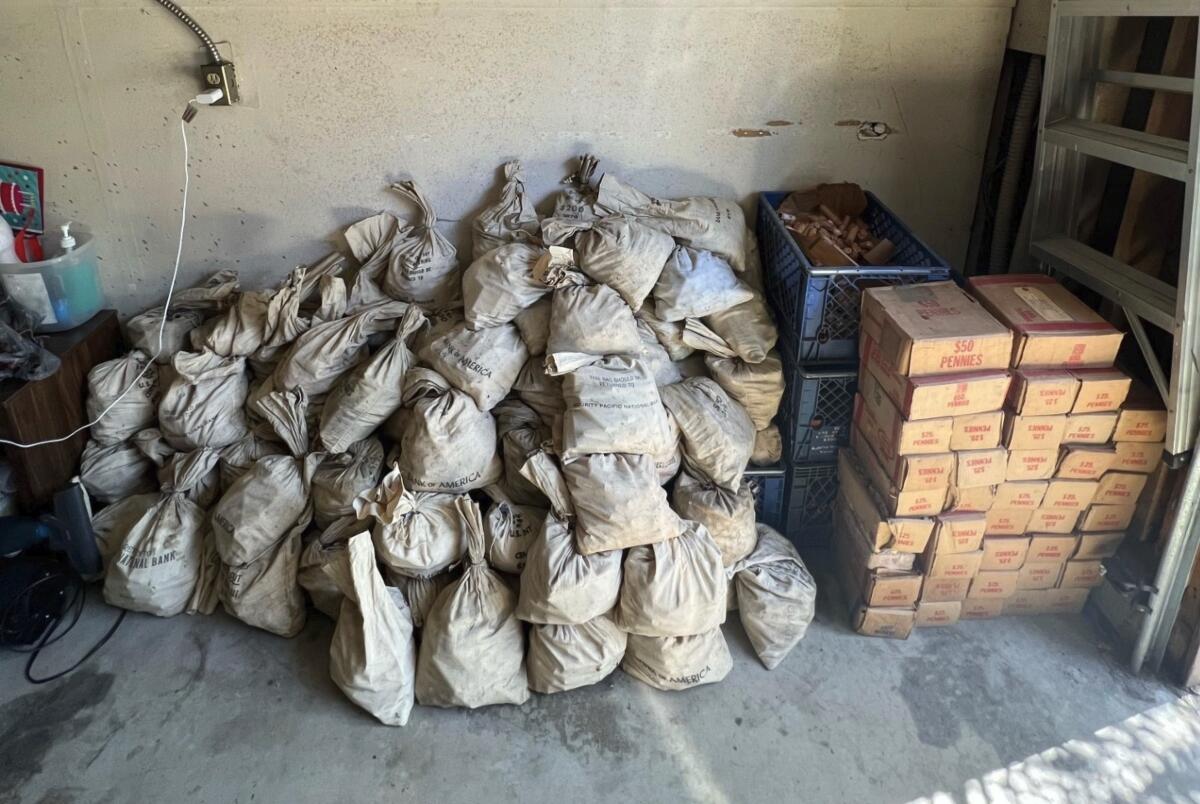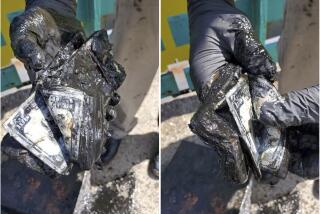Ontario family finds 1 million copper pennies in the basement crawl space of 1900s-era home

- Share via
John Reyes was helping his wife clean out her father’s 1900s-era home about nine months ago when they stumbled upon something truly unexpected.
Reyes was rummaging through the crawl space in the basement of his late father-in-law’s home when he found some loose pennies held together by disintegrating paper rolls. He kept looking and eventually found dozens of bank bags containing copper pennies.
Reyes, 41, a real estate agent in the Inland Empire, estimated the bags contained about 1 million pennies — with a face value of $10,000.
“There are banks [named] on the bags I haven’t even heard of or don’t exist anymore,” he said.
Reyes and his family initially intended to take the pennies to a bank and exchange them for their dollar value. He called a Wells Fargo branch in Los Angeles, but the manager told him that they didn’t even have enough room for all the coins. The manager told Reyes to bring about $300 worth of pennies at a time, but Reyes said that would be impossible because the coins were all wrapped in paper rolls.
Reyes then called his local bank and spoke with the manager, who was in disbelief.
“I showed her a photo and she was like, ‘I’ve been working with Wells Fargo forever and I’ve never seen anything like this. You can’t cash these in. There’s a chance you may have valuable pennies,’” he said.
The U.S. Mint initially made pennies out of pure copper, but starting in 1943 they were manufactured out of zinc-covered steel because copper was needed during World War II. Starting in 1982, the penny was made primarily from zinc.
Reyes started researching penny hunters on TikTok and considered determining the exact value of the vintage coins, but the family decided they would prefer if someone could take all of them off their hands.
He put the coins on OfferUp, a resale website, asking for three times their value, amounting to about $25,000 to $30,000. He said he’s received a few offers from people who said they could take a third or half of the pennies. Anyone who’s interested can contact Reyes via OfferUp or Instagram, he said.
The coins were hauled off by heavy-duty trucks and stored at an undisclosed location in the Inland Empire.
Reyes said his father-in-law, Fritz, and Fritz’s brother emigrated from Germany to the U.S. in the 1960s and were known as “war babies” because they were born during wartime. The house, which was built in 1904, has seven bedrooms, three kitchens and multiple bathrooms. Reyes said they believe it was once used as a bed-and-breakfast.
A few years before Fritz passed away, he “casually” showed his daughter and Reyes a few boxes of pennies but didn’t tell them how many boxes there were or where to find them.
“He just told us to make sure we take our time when going through the home,” Reyes said.
Fritz most likely started collecting pennies once the U.S. began switching over from copper to zinc, Reyes said.
“You have German immigrants who came over very young, and these were two great men who thought you should own things that are stored in value,” Reyes said. “They don’t believe in much besides the value of precious metals.”
Fritz and his brother lived in the house for more than 50 years. Fritz worked as a butcher in Hollywood and passed away 10 years ago, and his brother lived in the house until a few years ago. The house had remained untouched since.
The pennies may come in handy for the family because Reyes said they’re renovating the house in order to rent it out.
More to Read
Sign up for Essential California
The most important California stories and recommendations in your inbox every morning.
You may occasionally receive promotional content from the Los Angeles Times.









